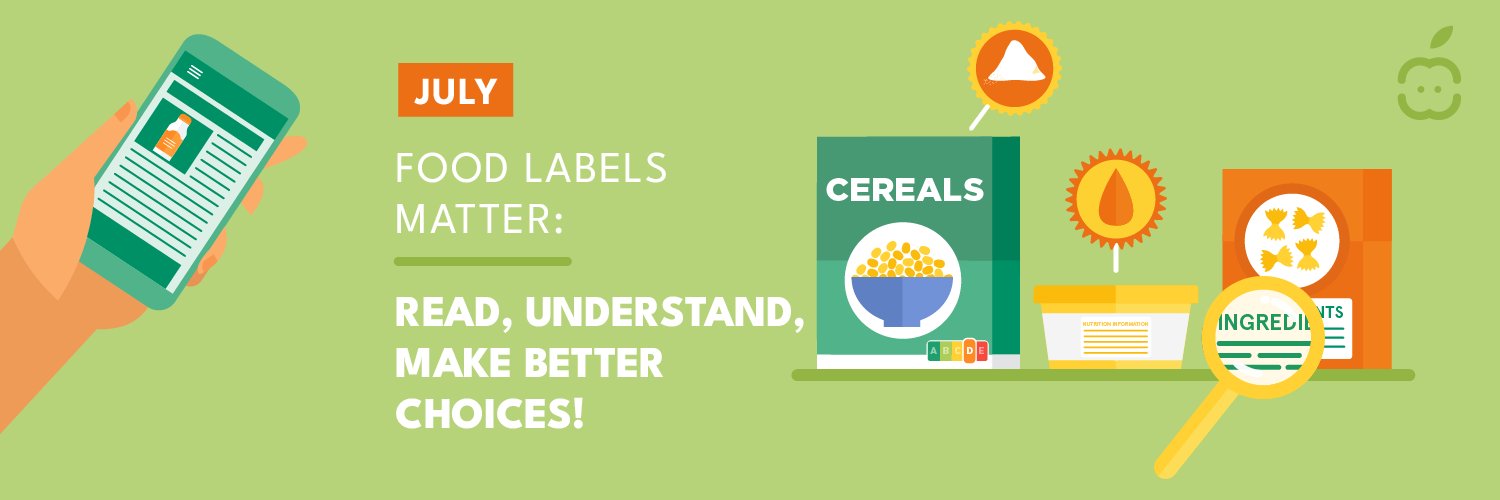
European Food Information Council (EUFIC)
@EUFIC
Food facts for healthy choices. For news from European projects, follow @SciFoodHealth.
Looking for a playful way to learn more about #FoodLabels? 🏷️ Our interactive tool lets you explore food products and discover what labels reveal, so you can make more informed choices on your next shopping trip. 🛒 Discover now! 👇
While #NutriScore can assist in comparing products within the same food category, it isn't a flawless system. To make the most of this label, it's important to understand how to interpret it correctly and its limitations. 👇

🚫 Don’t be fooled by misleading #FoodLabels! 'Made with #WholeGrains' ≠ 100% whole grain. Instead, look for products with whole grains high on the ingredients list (ideally first or second after water), and low in salt and sugar.

🌰🥑 #Fats aren’t the enemy, despite the #LowFat trend! Your body needs fat to function. It’s the excess and unhealthy types that can be harmful. Reading #FoodLabels helps you prioritise products with unsaturated fats for a more #HealthyDiet.

❌🥛🌾 #Lactose-free and #Gluten-free products are essential for people with allergies or intolerances, but they’re not automatically healthier for everyone. If not medically needed, cutting them out offers no benefits and could lead to nutrient gaps.

📱 Food scanning apps can be helpful for quick insights, 𝗕𝗨𝗧 they’re not perfect. They can support healthier choices ✅, but beware of their limitations and always consider your overall lifestyle and #EatingHabits. For personalised advice, speak to a health professional.

It’s #WorldEmojiDay! 🥳 We’re celebrating by sharing the story behind EUFIC’s logo… using emojis! It symbolises our mission to support healthier, more sustainable diets and lifestyles through science-based information.

What do Europeans want to see on food labels to assess a product’s environmental impact? 🌍 @EIT_Food gathered insights from 179 community members across 19 countries. ♻️ Clear guidance on #FoodPackaging disposal and eco-friendly practices are top concerns for many Europeans!…

🤔 Can you spot misinformation in viral food & diet trends? Join our webinar to learn how (social) media shapes food & health conversations and how we can spot and combat #misinformation with clear, science-based messages. 🔗 us02web.zoom.us/webinar/regist…

Thinking of using a food rating app? 📱 They can be helpful, but it's also important to be aware of their limitations. ✅❌ Labelling foods as simply “good” or “bad” can be misleading and overlook important context.


🛑 Not all logos mean the same thing! 🛑 Symbols like Organic, Fair Trade, or Keyhole mean that a product meets specific standards from how it’s produced to its #NutritionalProfile. But, don’t assume these products are universally healthier based solely on these claims!
In Europe, food labels are required to clearly indicate the presence of 14 major #FoodAllergens. 🤔 ✅ Always check the ingredient list carefully ✅ Look for highlighted allergens (often in bold or underlined) ✅ Double-check even familiar products, as recipes can change!

All #FoodAdditives used in the EU (and listed on food labels) are rigorously assessed by @EFSA_EU for their safety, acceptable intake levels, and potential health effects. ✔️ From preservatives to colourings, they’re used in small amounts to ensure #FoodSafety and quality. 🔍

Want to make healthier choices at the store? 🛒 Start with the #NutritionalInformation on food labels. It’s easier than you think! ✅ Check the serving size ✅ Keep an eye on calories ✅ Watch out for sugars, salt & saturated fats

Yesterday was #WorldZoonosesDay! 🌍🐾 Did you know some diseases can spread between animals and humans? That’s why the #OneHealth approach matters. By recognising how human, animal & environmental health are connected, we can protect all three. 👇

Trying to cut back on fat, sugar, or salt? 🍟🍬🧂 Your best tool is the #FoodLabel! Check the nutrition information table to compare similar products (compare per 100 g or ml) and choose the more nutritious one 🛒✅



